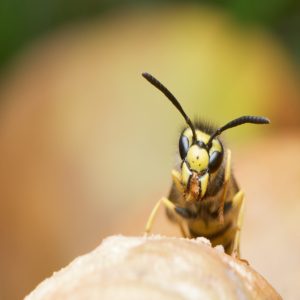 August is now upon us and with it comes more bothersome pests. Wasps are one of those pests that love to sting people during the summer. While wasps are found during the entirety of summer, they do sting people more during late summer.
August is now upon us and with it comes more bothersome pests. Wasps are one of those pests that love to sting people during the summer. While wasps are found during the entirety of summer, they do sting people more during late summer.
Wasps:
A few of the most common known wasps are yellow jackets and hornets, these varieties live together in a nest with an egg-laying queen and non-reporoducing workers. However, there are possibly over a hundred thousand different species of wasps around the world. While you might think that they might just bother you today, they have actually been bothering other animals since the Jurassic period and now they’re also coming after us!
Anatomy:
They have a hard exoskeleton that helps to protect their three main body parts. The three parts of a wasp are the head, the mesosoma (which does include the thorax and the first segment of the abdomen), and the metasoma. They have a small waist that joins together the first and second segment of the abdomen.
Wasps have thin wings that are held together by small hooks. Interestingly, there are some species where the females don’t have wings. Also, they not only have large compound eyes but also many simple eyes known as ocelli (eye spots). They have mandibles (jaws) which they have adapted for biting and cutting and they also poses another mouthpiece that allows them to drink nectar.
Diet:
 Adult solitary wasps feed on nectar. They spend a lot of time during adulthood searching for food for their young, which eat other insects and spiders. There are predatory wasps who sting their prey and feed on other insects. Also, there are some social wasps which will feed on nectar and dead insects.
Adult solitary wasps feed on nectar. They spend a lot of time during adulthood searching for food for their young, which eat other insects and spiders. There are predatory wasps who sting their prey and feed on other insects. Also, there are some social wasps which will feed on nectar and dead insects.
Treatment:
If you happen to get stung by a wasp you should follow these few steps to treat the affected area. Most people just get a small irritation around the area where the wasp stung them, however some might have more severe reactions.
- You should carefully remove the stinger with tweezers.
- You need to clean the area with soap and water.
- You should place ice, wrapped in a cloth, on the sting for 10 minutes then off for 10 minutes.
- You might want to take some Benadryl if you only have mild symptoms.
- You should contact a doctor if you have an severe reactions.
Contact us by calling (615) 220-1933 or visiting our contact page if you have any pest concerns.
Check out these links for more information about wasps and how to treat wasp stings.
